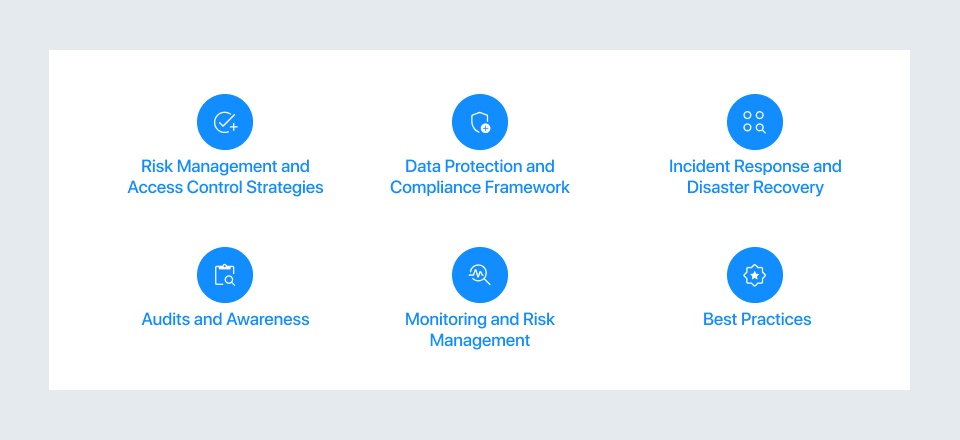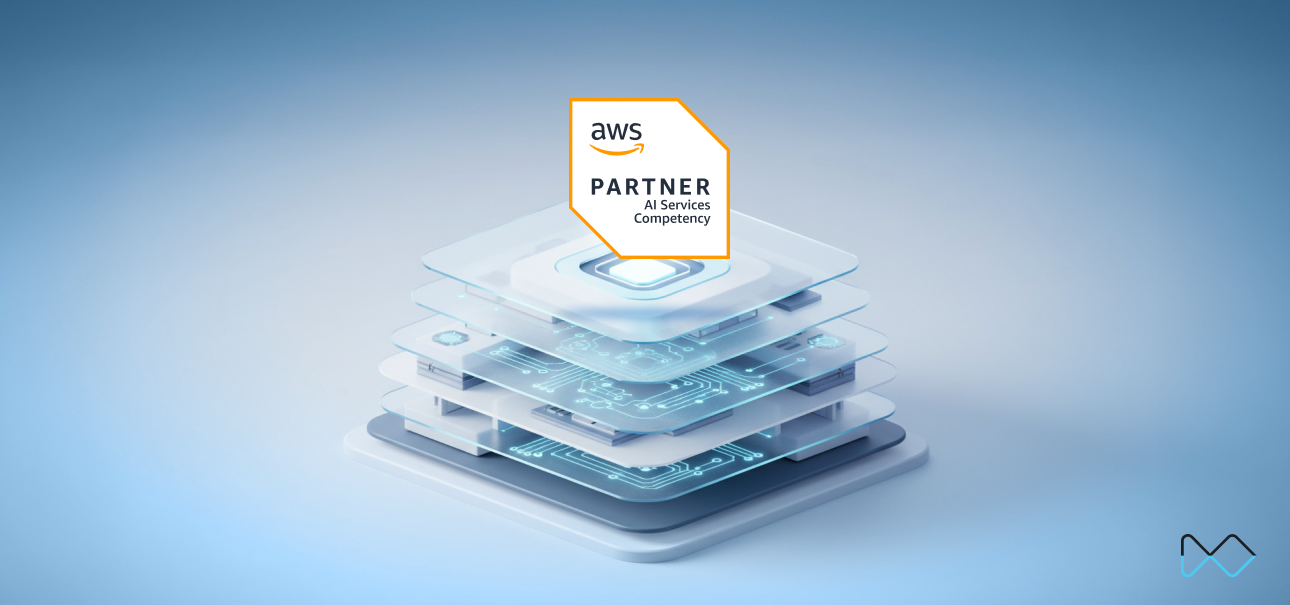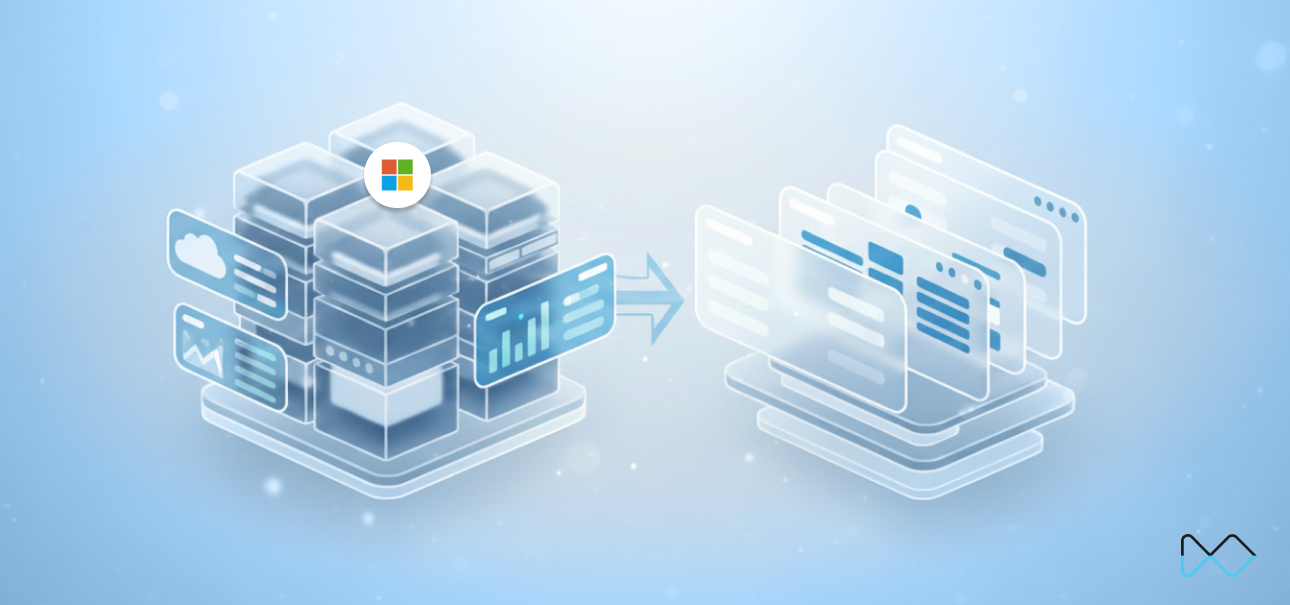How Secure and Compliant Is Your Data Foundation?
In today's data-driven world, organizations across all industries leverage data for business intelligence (BI), analytics, and digital transformation. However, the actual value of data can only be realized when it is managed securely and in full compliance with ever-evolving regulations. Understanding the importance of data security is essential, as a robust Data Security and Compliance Policy is not just a regulatory checkbox but the bedrock upon which trustworthy BI, accurate analytics, and sustainable business growth are built.
This post, drawing insights from a comprehensive Data Security and Compliance Policy framework, is aimed at business leaders, data teams, and IT decision-makers who recognize that privacy and security are critical when handling sensitive information. We will explore the core elements of such a policy and highlight how a proactive approach to data protection and security enhances security posture, minimizes data exposure, and ensures adherence to critical industry standards.
While this discussion focuses heavily on the vital areas of data security and compliance as outlined in our source document, it's important to acknowledge that the broader scope of data management, including detailed strategies for data quality and metadata management specifically for enhancing BI and analytics insights, extends beyond the primary focus of this security-centric policy. However, establishing the robust security and compliance measures discussed here is an essential prerequisite for building any reliable and trustworthy data analytics and BI infrastructure.
Let's delve into the core elements that constitute a resilient data security and compliance framework.
Core Elements of a Robust Data Security and Compliance Policy

A comprehensive data security and compliance policy is built upon several interconnected pillars designed to protect data throughout its lifecycle.
1. Risk Management and Access Control Strategies
Effective risk management is essential for identifying, assessing, and mitigating potential risks to sensitive data and systems. A proactive approach protects the organization against both internal and external threats, minimizing the impact of potential data breaches and operational disruptions.
The risk management process involves several key steps:
-
- Risk Identification: Identify and assess potential risks that could impact sensitive data's confidentiality, integrity, and availability. This includes evaluating internal and external threats such as cyberattacks, natural disasters, and human errors, and understanding industry-specific risks like intellectual property theft or regulatory compliance breaches.
- Risk Assessment: Assess the likelihood and impact of identified risks on business operations. This involves analyzing the probability of a risk occurring and the consequences if it does. Tools like Risk Matrices or Qualitative Risk Analysis can help prioritize risks based on their potential severity.
- Mitigation Strategies: Develop and implement strategies to reduce the likelihood or impact of identified risks. Common strategies include strengthening security controls like firewalls, deploying encryption, and utilizing intrusion detection systems (IDS). Employee training programs on security threats like phishing are also crucial. Evaluating third-party risks through regular security audits and compliance checks is part of vendor management. Access control mechanisms, such as list-based access control (LBAC) and row-level access control (RLAC), restrict data access based on roles. Implementing standards for managing information security risks is also key.
- Risk Monitoring and Review: Continuous monitoring and periodic reviews of risk management processes are essential for adapting to new threats and ensuring the ongoing effectiveness of mitigation strategies. This includes conducting regular security audits and reviewing/updating incident response plans. Tools like Security Information and Event Management (SIEM) systems, such as Azure Sentinel, can assist in monitoring and real-time threat detection.
Access control is a critical component of risk management, ensuring that only authorized personnel can access sensitive data and systems. Implementing effective access control mechanisms limits exposure to risks such as data breaches, insider threats, and unauthorized access.
-
- Role-Based Access Control (RBAC): RBAC is an effective way to manage access rights based on users' roles and responsibilities. It ensures employees only access the data they need to perform their job functions. Implementing the principle of least privilege is a best practice.
- Authentication and Authorization: Strong authentication mechanisms ensure only legitimate users access sensitive systems. Methods include Multi-Factor Authentication (MFA), combining factors like passwords, fingerprints, or OTPs, and Biometric Authentication. Best practices recommend enforcing MFA for all critical systems.
- Data Encryption: Encrypting sensitive data both at rest (stored) and in transit (transmitted) protects it from unauthorized access. Encryption ensures data remains unreadable even if intercepted. Encrypting data under compliance regulations like GDPR or HIPAA is a best practice.
- Audit Trails: Maintaining detailed logs of data access activities is essential for accountability. Audit trails help detect unauthorized activity and support investigations. Regularly reviewing and storing audit logs for at least a year is recommended for compliance and forensic assistance.
Implementing these strategies improves security posture, ensures compliance with industry regulations, and minimizes data exposure by limiting sensitive data access to authorized personnel.
2. Data Protection and Compliance Framework
Compliance with legal and regulatory requirements is fundamental for securely, ethically, and responsibly managing data. Key frameworks and regulations govern data privacy and protection, particularly for entities processing sensitive or personal information.
-
- General Data Protection Regulation (GDPR): GDPR mandates strict controls over personal data processing, requiring explicit consent, transparency, and granting individuals rights regarding their data. Organizations must implement measures like data encryption and security during storage and transit.
- California Consumer Privacy Act (CCPA): The CCPA enhances privacy rights for California residents by requiring businesses to disclose data collection/usage and allowing users to opt out of data sales.
- Health Insurance Portability and Accountability Act (HIPAA): HIPAA mandates the protection of personal health information (PHI) for entities handling health data. Compliance involves implementing safeguards like encryption, access control, and audit logging.
- ISO 27001: This international standard for information security management systems (ISMS) provides a framework using risk management, access control, encryption, and incident management. It requires regular risk assessments and continuous improvement.
- SOC 2: SOC 2 standards for service organizations focus on security, availability, processing integrity, confidentiality, and privacy. To protect data integrity, they require strong internal controls, regular audits, and compliance.
Automated compliance tools offered by cloud platforms like AWS and Azure can assist in managing privacy, risk, and compliance processes by automating data audits, ensuring transparency, and mitigating risks. These platforms offer built-in security features and compliance certifications.
Data Encryption and Protection are foundational methods for protecting sensitive information at rest and in transit. Effective techniques safeguard data from unauthorized access.
-
- Encryption at Rest: Data stored in databases, file systems, or cloud storage should be encrypted using strong algorithms like AES-256. Tools like AWS Key Management Service (KMS) and Azure Key Vault help manage encryption keys securely in cloud environments.
- Encryption in Transit: Data transmitted over networks should use secure protocols like Transport Layer Security (TLS). Cloud providers like Microsoft Azure offer built-in TLS support.
- End-to-End Encryption (E2EE): For highly sensitive communications, E2EE ensures data is encrypted from origin to destination, protecting it during transmission.
Data Localization and Sovereignty refer to storing and processing data within specific geographical borders to comply with local laws. While the U.S. lacks federal data localization laws, specific sectors (like finance under GLBA) may require data residency within the U.S.. For global data transfers, mainly from jurisdictions with strict laws like the EU, organizations must ensure compliance using mechanisms such as Standard Contractual Clauses (SCCs). Cloud providers like AWS and Microsoft Azure offer options to configure data residency to meet these requirements.
Data Retention and Disposal are critical for minimizing risks and ensuring compliance with regulations mandating data deletion after a certain period. Retention policies should align with business needs and legal obligations, such as keeping financial records for tax purposes. Securely disposing of data when no longer needed prevents unauthorized access. Methods include data wiping, cryptographic erasure, and physical destruction. Cloud platforms like AWS S3 Object Expiration can automate obsolete data removal while ensuring policy compliance.
3. Incident Response and Disaster Recovery
Data breaches and security incidents can significantly harm an organization. A comprehensive Incident Response Plan (IRP) helps organizations respond quickly, minimize impact, and recover efficiently. Data protection measures, including detection, containment, eradication, recovery, and post-incident analysis, are crucial for handling breaches.
Key components of incident handling include:
-
- Preparation: Establishing and training an Incident Response Team (IRT) is vital. Continuous monitoring using tools like SIEM systems and IDS/IPS helps detect potential breaches.
- Identification: Incorporating automated alert systems detects anomalies or breaches in real-time.
- Containment and Eradication: Isolating affected systems and removing malicious code prevents the spread of a breach.
- Recovery: Restoring services from clean backups and monitoring systems ensures the breach is contained. Disaster recovery solutions like AWS Disaster Recovery or Azure Site Recovery help recover affected systems and ensure business continuity.
- Post-Incident Review: Investigating the breach's root cause and effectiveness of the response helps implement improvements.
Tools like AWS Security Hub, Azure Sentinel, AWS CloudWatch, and Azure Monitor Suite, as well as incident management platforms like AWS CloudWatch Manager and Azure Monitor, assist in incident detection and management.
Backup and Disaster Recovery strategies are essential for recovering from disruptions. Regularly scheduled backups and a robust disaster recovery plan minimize data loss and downtime.
-
- Data Backup: Regular backups (full, incremental, differential) of critical data should be stored securely on-premises and in the cloud. Cloud platforms like AWS S3 and Azure Blob Storage offer scalable backup solutions. The 3-2-1 backup strategy is a best practice: three total data copies, two local copies on different devices, and one copy stored offsite or in the cloud. Automated backup tools streamline the process.
- Disaster Recovery (DR): A DR plan outlines system restoration after a disaster. It defines Recovery Time Objectives (RTO) and Recovery Point Objectives (RPO) to set goals for restoration speed and acceptable data loss.
Disaster Recovery in the Cloud leverages geographical data distribution for business continuity. Storing data in multiple regions enables redundancy and swift recovery. Key aspects include data replication across regions using services like Amazon S3 Cross-Region Replication or Azure Geo-Redundant Storage, failover mechanisms to switch to a backup region during outages, ensuring compliance and resilience, and minimizing downtime and data loss by maintaining near real-time copies.
4. Audits and Awareness
Audit Protocols are structured frameworks used to assess, monitor, and validate the effectiveness of data security measures and ensure compliance. They involve periodic reviews of access controls, data handling, and policy adherence. Key steps include identifying sensitive data, evaluating risks, and implementing corrective actions. Robust audit protocols safeguard against breaches, maintain compliance, and build trust.
External Audits involve independent third parties assessing security and compliance, providing an unbiased evaluation, and identifying vulnerabilities. Their findings help ensure regulatory requirements are met and enhance data protection.
Security Awareness and Training are critical for a secure data environment. While audits identify vulnerabilities, awareness programs equip employees to protect data and comply with regulations. Security awareness matters because it reduces risks from human errors like phishing, ensures compliance with regulations like GDPR and HIPAA, and builds a security culture.
Key components of awareness training include threat recognition (phishing, malware), policy compliance understanding, incident reporting protocols, secure practices (strong passwords, MFA, access controls), and ongoing training on emerging risks.
Implementing a program involves assessing knowledge, creating targeted training tailored to roles, leveraging tools like e-learning and simulations, customizing training frequency by company size, and tracking effectiveness through metrics. Benefits include reduced breaches, enhanced compliance, and improved data governance.
5. Monitoring and Risk Management
Continuous monitoring and risk management are crucial for identifying, assessing, and mitigating threats. Monitoring systems help detect vulnerabilities early.
Monitoring and Detection practices include:
-
- Real-Time Monitoring: Continuously track systems and networks for suspicious activities, like abnormal login attempts. Tools like AWS CloudWatch and Azure Monitor Suite automate monitoring.
- Event Logging and Analysis: Maintain logs of user activities and system changes. Tools like Amazon OpenSearch Service and Azure Monitor Logs help analyze logs for patterns and anomalies.
- Threat Intelligence: Use platforms to stay updated on emerging threats and proactively defend against them.
- Anomaly Detection: Implement tools to identify deviations from normal patterns, triggering alerts for investigation. Solutions like AWS GuardDuty, Azure Sentinel, or Google Cloud Security Command Centre can assist.
Third-Party Risk Management is essential when working with vendors. This involves assessing vendor security policies and certifications before onboarding, including contractual obligations for data protection and breach reporting, conducting ongoing risk assessments like penetration testing reviews, and restricting third-party access to only necessary data and systems.
Continuous Improvement involves regular security audits to evaluate policies and tools, using feedback loops from incidents to update policies, regular employee training on security best practices and threat detection, and updating policies to address new regulations or threats.
6. Best Practices
The policy outlines important "Do's and Don'ts" for both Cloud Environments and Employees.
For Cloud Environments, Do encrypt data, monitor and audit, automate configuration, manage costs, ensure high availability, secure access, and document and train. Don't hardcode credentials, ignore compliance, leave resources unsecured, skip testing, over-provision resources, neglect updates, or assume defaults are secure.
For Employees, Do use Multi-Factor Authentication, use a password manager, implement security awareness programs, be cautious with unexpected emails, keep apps/OS up to date, change passwords if compromised, submit payment information via secure sites only, and keep anti-virus software running. Don't reuse passwords, keep passwords unsecured, excuse people from learning (cybersecurity is everyone's responsibility), click on unexpected links/files in emails, delay installing security updates, share passwords, submit payment info via email, or miss updating anti-virus.
Real-World Scenarios
The principles outlined in this policy are applied in various practical scenarios to protect sensitive data. Examples include:
-
- Responding to Intellectual Property (IP) Theft Attempt: Detecting unusual access, locking accounts, investigating, notifying authorities and stakeholders, and enhancing security measures are crucial steps in handling attempted IP theft. This leads to quick detection, containment, prevention of further access, compliance with notifications, and improved security.
- Ensuring Data Encryption for Design Files: Sensitive design files are protected by implementing robust encryption (AES-256) at rest and in transit, using RBAC to restrict access, securely managing encryption keys, and using E2EE for external sharing. This ensures files are protected, compliance is maintained, and secure collaboration is enabled.
- Handling a Data Breach in Engine Performance Monitoring Systems: Using an intrusion detection system to flag unauthorized access, isolating the affected system, analyzing logs, notifying stakeholders and authorities, patching vulnerabilities, improving access controls, and encrypting data are key response steps. Outcomes include quick containment, data protection through encryption and access controls, upheld regulatory compliance, and enhanced future security.
- Vendor Compliance for Supply Chain Security: Requiring vendors to adhere to security standards, conducting regular compliance audits, implementing corrective actions if needed, and continuous monitoring ensures enhanced security across the supply chain. This reduces breach/non-compliance risks and improves trust in vendor partnerships.
Key Cautions
Organizations must be aware of common pitfalls that undermine online data security. These include weak password policies, unsecured data disposal methods, inadequate backup and disaster recovery plans, and insufficient vendor oversight. Maintaining a proactive approach to data security and privacy ensures that sensitive information remains protected, while emphasizing that it strengthens overall trust and compliance.
Conclusion
A comprehensive Data Security and Compliance Policy is indispensable for any organization navigating the complexities of the modern data landscape. Businesses can build a fortified data foundation by prioritizing risk management, implementing stringent access controls, adhering to industry standards and regulations, planning for incident response and disaster recovery, conducting regular audits, maintaining security awareness, and continuously monitoring systems and vendors. Ensuring the security and privacy of data is crucial, as robust data security in business safeguards sensitive information and reinforces stakeholder trust. Focusing on company data security and embedding security in data practices throughout operations mitigates the impact of security incidents. It creates a trusted environment necessary for accurate business intelligence, insightful analytics, and successful digital transformation. Building and maintaining this data security and compliance level requires expertise and dedication.
Ready to strengthen your data security posture and ensure compliance?
NeenOpal offers expert data consulting services and tailored data management solutions designed to help your business protect its valuable assets and securely unlock your data's full potential.
Contact us today for a consultation or explore our data management solutions to learn how we can help you build a resilient and compliant data future.
Frequently Asked Questions
1. Why is data security and compliance important for modern businesses?
Data security and compliance are critical for protecting sensitive information, ensuring regulatory adherence, and building customer trust. With regulations like GDPR, HIPAA, and CCPA, organizations must safeguard data to avoid breaches, financial penalties, and reputational damage. A strong compliance framework also supports secure digital transformation and sustainable business growth.
2. What are the key elements of a strong data security and compliance policy?
A robust data security and compliance framework typically includes risk management, access controls, data encryption, incident response planning, disaster recovery strategies, audit protocols, and employee security awareness training. Implementing standards such as ISO 27001, SOC 2, and automated compliance tools on cloud platforms like AWS and Azure ensures continuous protection and regulatory compliance.
3. How can businesses strengthen their security posture and minimize compliance risks?
Organizations can enhance their security posture by enforcing multi-factor authentication (MFA), encrypting data at rest and in transit, conducting regular security audits, and implementing role-based access controls (RBAC). Additionally, adopting cloud-native compliance tools like AWS Security Hub or Azure Sentinel helps in real-time monitoring, while vendor compliance checks safeguard against third-party risks.






